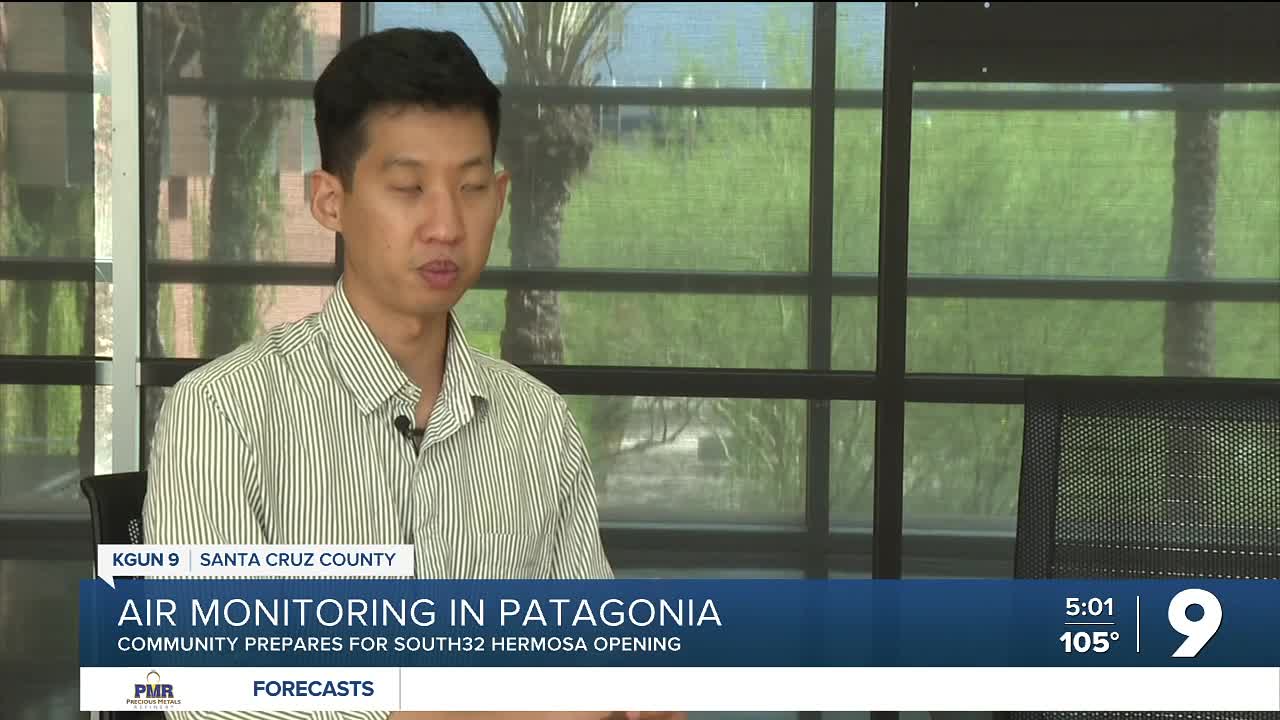SANTA CRUZ COUNTY, Ariz. (KGUN) — Concerns over potential air pollution from the future South32 Hermosa Mine have prompted Patagonia community members to take monitoring into their own hands.
Residents have installed air quality sensors throughout the area, aiming to establish baseline readings ahead of the mine’s projected opening in 2027.
Robin Lucky, president of the Calabasas Alliance, spearheaded the initiative. She says the monitoring required of South32 only applies to the mine site itself, and doesn't cover surrounding residential areas that could be affected by dust and particulate matter generated by mining activity and increased truck traffic. This includes PM2.5, tiny particles that can pose serious health risks due to their ability to penetrate deep into the respiratory system.
“This is ground zero for destruction and air particulate matter going very high because of the trucks, because of the wind coming over,” said Lucky. “We are very close to this mine, and they are sitting on top of this community.”
To collect data, Lucky partnered with the University of Arizona’s College of Public Health and Arizona State University in March to install low-cost air sensors capable of recording real-time pollution levels.
“We were able to install air quality sensors working with these community groups to generate real-time, hyperlocal, actionable air pollution data,” said Dr. Chris Lim, assistant professor at the UA College of Public Health. “That includes particulate matter, which will probably be generated from the mine development and traffic.”
Lucky said Lim was able to come up with 20 units after they met, much more than she expected.
Lim says the community can use this data to inform policymakers, along with other community members, about local pollution, such as that caused by area mining.
Mahdi Faraji, a PhD student at the UA, says the program empowers underserved communities to have more control over improving their air quality.
“Air is something that we cannot buy,” Faraji said. “Everyone has to enter the air that exists so we have to keep it safe.”
Lucky says the sensors are already collecting data, which will give the community a “runway” of at least one to two years’ worth of information before operations begin to extract zinc and manganese from the nearby Clark deposit. This baseline air quality data can be compared with air quality once the mine begins operating.
“It’s important to use technology to monitor potential problems,” she said. “All the units are very precise, so we can see trends as they happen.”
South32 Hermosa President Pat Risner says the company supports additional data collection and has also installed its air monitors in the region, including some beyond the mine boundary.
“There’s a tremendous opportunity to look at those datasets together,” said Risner. “Putting information in citizens’ hands is important.”
However, Risner notes the data being gathered by the university-backed monitors differs in type and methodology from South32’s equipment.
“That program is measuring very different things to what our program is,” he said. “They are unique in the types of monitors being used and what’s being measured.”
Lucky says that, ultimately, the sensors enable the community to stay aware of the potential impacts of mining.
“These people have been here a lot longer than this mine,” she said. “They need care. We need to take care of them.”
——
Joel Foster is a multimedia journalist at KGUN 9 who previously worked as an English teacher in both Boston and the Tucson area. Joel has experience working with web, print and video in the tech, finance, nonprofit and the public sectors. In his off-time, you might catch Joel taking part in Tucson's local comedy scene. Share your story ideas with Joel at joel.foster@kgun9.com, or by connecting on Facebook, Instagram or X.





